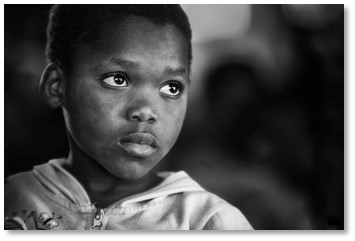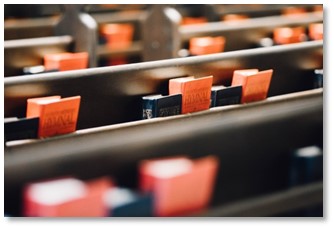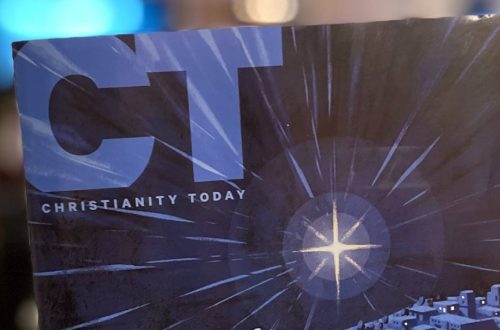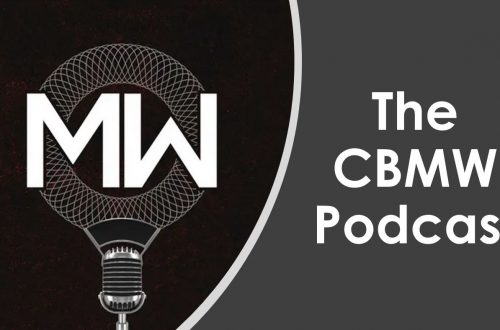Last week, The Wall Street Journal published an op-ed by Heather MacDonald titled “The Myth of Systemic Police Racism.” In the essay, MacDonald provides compelling empirical evidence to prove that blacks are not shot or killed by police at a level disproportionately higher than whites. She writes:
In 2019 police officers fatally shot 1,004 people, most of whom were armed or otherwise dangerous. African-Americans were about a quarter of those killed by cops last year (235), a ratio that has remained stable since 2015. That share of black victims is less than what the black crime rate would predict, since police shootings are a function of how often officers encounter armed and violent suspects. In 2018, the latest year for which such data have been published, African-Americans made up 53% of known homicide offenders in the U.S. and commit about 60% of robberies, though they are 13% of the population.
The police fatally shot nine unarmed blacks and 19 unarmed whites in 2019, according to a Washington Post database, down from 38 and 32, respectively, in 2015. The Post defines “unarmed” broadly to include such cases as a suspect in Newark, N.J., who had a loaded handgun in his car during a police chase. In 2018 there were 7,407 black homicide victims. Assuming a comparable number of victims last year, those nine unarmed black victims of police shootings represent 0.1% of all African-Americans killed in 2019. By contrast, a police officer is 18½ times more likely to be killed by a black male than an unarmed black male is to be killed by a police officer.
The essay made quite a splash and was making the rounds in conservative circles throughout the week. The eye-popping stat is at the beginning of the second paragraph: “The police fatally shot nine unarmed blacks and 19 unarmed whites in 2019.” Only nine in an entire year. I’ve seen that stat recurring around social media to support the argument that there really are no racial disparities in policing. Nothing to see here move along.
The problem I was having with this is that it contradicts the countless anecdotal experiences that I have heard from minority friends and read about from minority writers. All of them to a man describe contacts with the police that are more frequent and sometimes more forceful than anything I have ever experienced. Who’s right? The stats or the stories?
This isn’t just an academic question for me. I am a pastor, and I have dear minority brothers and sisters in our congregation who describe to me experiences with law enforcement very different from my own. How do I square what they describe to me with the stats in the story above? If I go with the stats, how will I be able to hear their stories, empathize, and shepherd? How will I weep with those who weep if the stats tell me that there really isn’t anything to weep about? (Rom. 12:15)
A couple of days ago, I came across an article that was really helpful. This article is by Harvard Economist Roland Fryer and is one of the most comprehensive studies on the question of race and policing:
Roland G. Fryer, “An Empirical Analysis of Racial Differences in Police Use of Force,” Journal of Political Economy 127, no. 3 (June 1, 2019): 1210–61. [pre-pub version here]
This study shows two things that are relevant to the dilemma I just described. First, it shows that The Wall Street Journal’s stats about police shootings are basically correct. From Fryer’s study:
“We find no evidence of racial discrimination in officer-involved shootings. Investigating the intensive margin—the timing of shootings or how many bullets were discharged in the endeavor—there are no detectable racial differences” (p. 1214, underline mine).
When it comes to shootings, there are no major differences between whites and non-whites. While that is true, the second part is really important.
“On non-lethal uses of force, blacks and Hispanics are more than 50 percent more likely to experience some form of force in interactions with police” (p. 1210). “On nonlethal uses of force, there are racial differences—sometimes quite large—in police use of force… As use of force increases from putting hands on civilians to striking them with a baton… the racial difference remains roughly constant” (p. 1258, underline mine).
Think about what this means. While there is no evidence of racial disparity in police shootings, there is evidence of racial disparity in non-lethal uses of force, which are far more common in the black community than the shootings themselves.
This study does not prove that police are motivated by racism in non-lethal encounters. Nor does it say that non-lethal uses of force are without justification. It merely establishes that our minority brothers aren’t making up the fact that their encounters with the police involve the use of force far more often than they do with whites. We don’t have to agree on the causes for this disparity in order to recognize that it exists and results in no small amount of despair among our minority neighbors.
In his book Don’t Shoot, David Kennedy describes an experience that is very common in the black community:
I was on the street with drug cops not long ago. Where isn’t the point, they’re not the point–they’re good guys, I liked them–the point is this is what goes on. They stopped a group of young black men, held them, got ID, called in to dispatch to check wants and warrants. The young black men had been through this before, knew their part, waited. One was respectful, contained, and very, very angry. After half an hour or so the radio check came back–nothing. The unit’s supervising officer told them that they could move on. There was no explanation or apology or word of thanks. There almost never is. The angry one–still civil and respectful, but furious–said, I live here. My house is on the next block. All I was doing was going home. Then stay in front of your house, the officer said. This is a drug area. You know what’s going to happen. (pp. 143-44)
Kennedy’s book has example after example of this kind of thing. This morning I just read the gut-wrenching, personal account of Shai Linne, a brother in Christ, who explains what this is all about for him personally:
It’s about being handcuffed and thrown into the back of a police car while walking down the street during college, and then waiting for a white couple to come identify whether or not I was the one who’d committed a crime against them, knowing that if they said I was the one, I would be immediately taken to jail, no questions asked…
It’s about taking a road trip with my sons to visit Blair’s family in Michigan—and my greatest fear being getting pulled over for no reason other than driving while black, told to get out of the car, cuffed, and sat down on the side of the road, utterly emasculated and humiliated with my young boys looking out the window, terrified, which is exactly what happened to a good friend of mine when he took his family on a road trip.
If you talk to almost any black man in your community, they will describe similar experiences. You don’t have to affirm Critical Race Theory or any other false narrative in order to recognize how these experiences create resentments and mistrust and despair between the black community and law enforcement.
These kinds of encounters are not limited to the black community. Just last week, a disturbing video emerged of police pushing over an elderly white man. How many of these kinds of non-lethal encounters happen every day and go unreported? How many more of these kinds of things are happening in minority communities where contacts with the police are far more common?
If you are not a minority, it would be helpful to try and put yourself in the shoes of those who have experienced this. Think about how violated you feel submitting to TSA pat-downs at the airport. How would you feel if the police were pulling you aside and forcing you to submit to similar kinds of searches and pat-downs while you’re walking in your neighborhood? What if you experienced or heard about rough treatment during these searches in your community? It would be difficult to tolerate.
These are the daily experiences of folks in the black community, not just those who are criminals but also of those who are not criminals. And it is often difficult to punish officers who abuse their power. Fryer’s study says this:
Police officers face discretely higher costs for officer-involved shootings relative to nonlethal uses of force. (p. 1258)
In other words, officers are far more likely to be punished for shooting someone unjustly than they are for roughing them up in some way. There is often no way to sanction officers who throw someone to the ground or who rough them up without cause. These encounters typically don’t make the news, so officers often aren’t punished for them. The result is that they happen more often than they should, and that is widely known in the black community.
These are the kinds of experiences that we often don’t see or acknowledge, but we need to. And these experiences are what frame black people’s interpretation of the George Floyd video. They see the Floyd video as another example of a police officer abusing his authority and treating someone roughly past the point of necessity. They see how “non-lethal” use of force can end up killing a guy. If you and your community haven’t had a lot of encounters with the police like this, seeing such a video is going to have less of an effect on you than it will on those communities where this kind of police contact is common.
If I wish to love my minority brothers and sisters well, I should try to see these things from their point of view, even while trying to shepherd them to take captive every thought to make it obedient to Christ (2 Cor. 10:5). I need to hear them out and understand that they aren’t making up problems out of thin air.
As a pastor thinking through all of this and trying to be faithful as a shepherd among God’s people, I need to be careful about errors from both the left and the right.
The error from the right will be a refusal to acknowledge any racial disparities in encounters with police and how those disparities shape a community’s despairing attitudes toward law enforcement. If we aren’t guarding ourselves from errors on the right, we might gaslight some of our brothers and sisters and not be able to commiserate with them like the Bible commands, “weep with those who weep” (Rom. 12:15). They will not feel like we are hearing them, which will in turn lead to alienation from them. It will also keep us blind to injustices that the Bible says we ought to expose: “And do not participate in the unfruitful deeds of darkness, but instead even expose them” (Eph. 5:11).
The error from the left includes ideologies like Critical Race Theory and intersectionality that are at odds with the gospel and that frame many people’s thinking about these events. These ideologies reflect materialistic worldviews that view all of life through the prism of racial identity and power relations. They tend to produce blanket condemnations of law enforcement that are not fair to the vast majority of officers who are serving our communities well and who abhor police misconduct as much as we do. Some people use such ideologies to justify the rioting and looting that have undermined the aims of peaceful protestors around the country.
If pastors aren’t vigilant about errors coming from both right and left, we risk letting divisive ideologies tear our congregations apart and compromise our focus on gospel-ministry. We also miss the opportunity to minister effectively to despairing minority brothers and sisters. And this we must never do.






